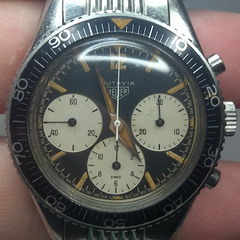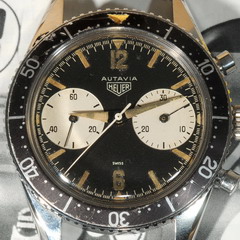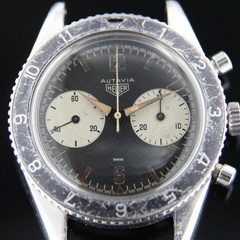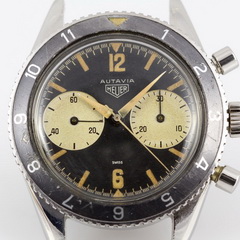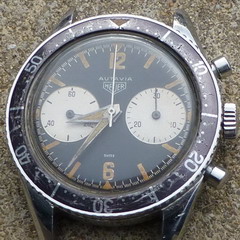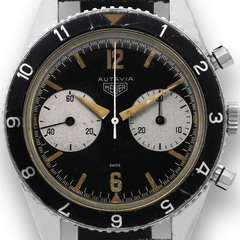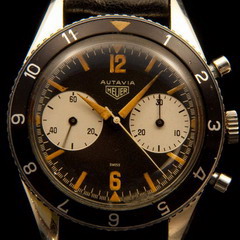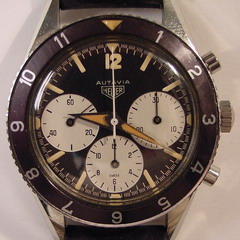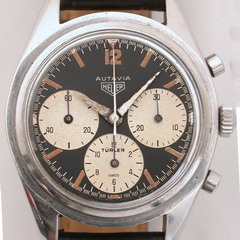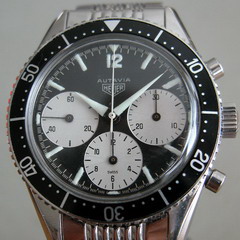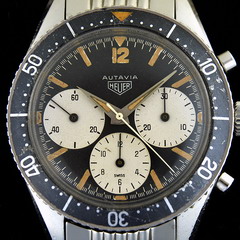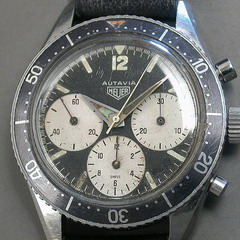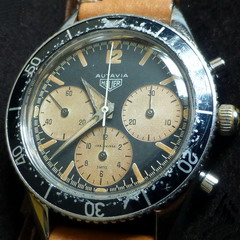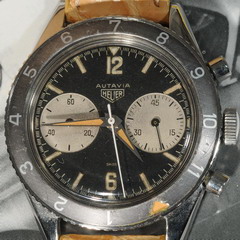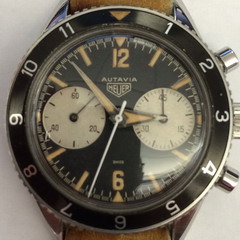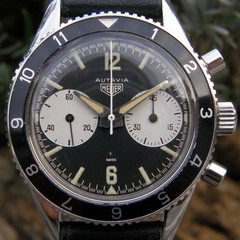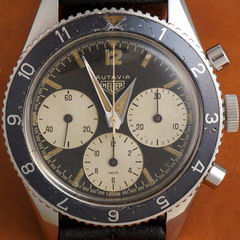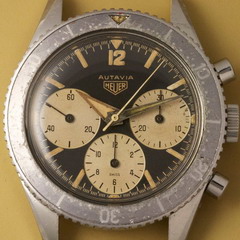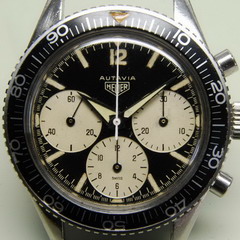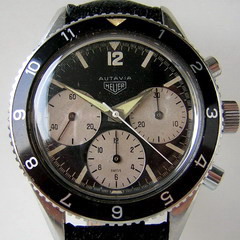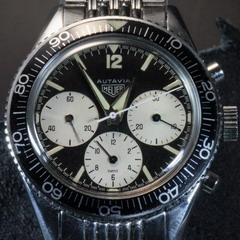|
The
Autavia Chronograph
- Heuer
introduced the "Autavia" dashboard
timer in 1933, with this 12-hour
stopwatch designed to be mounted on the
dashboard / panel of an Automobile or
Airplane (thus the name is derived from
the words
"AUTomobile" and
"AVIAtion").
Heuer introduced the Autavia
chronograph in 1962, making it the
first Heuer chronograph to have a model
name on the dial; the
"Carrera" was introduced one year
later.
- The
Autavia chronograph made its first
appearance in a
1962
brochure
of chronographs. In this brochure,
Heuer proudly declared that the "most
useful feature of the new Autavia is
the outside turning bezel with either a
60 minute or 12 hour division". Indeed,
the Autavia was the first Heuer
chronograph with a rotating bezel, a
feature that defined the Autavia
throughout its production
life.
The
First Execution of the
Autavia
- The
first execution of the Autavia
chronograph is defined by (a) a
screw-back case, (b) larger registers
than subsequent executions, and (c)
dauphine hands. On the earlier version
of the first execution Autavia, the
hands were covered with luminous
material. On subsequent versions, the
hands maintained their dauphine shape,
but had polished steel edges, with
luminous centers.
- All
these Autavias were powered by Valjoux
movements -- Valjoux 72 for the three
register (12-hour) models and Valjoux
92 for the two-register
models.
This
Registry
- We
have prepared this Registry for two
primary purposes. First, studying a
collection of these watches is a good
way to learn about their elements
(hands, crowns, pushers, etc.), and
determine whether a particular watch is
entirely original or may have had some
components replaced. Second, it will be
interesting to see how many of these we
can locate and what this might tell us
about the quantity produced. In the
world of vintage Heuers, the "big
register" Autavias are something
of "cult" or "grail" watches,
so we will document their attributes
and ownership.
Heuer's
use of Serial Numbers
- Heuer
did not track the serial numbers that
were marked on either the cases or the
movements of its chronographs. Rather,
the serial numbers seem to have been
used by the company that manufactured
these cases. Still, there are lessons
to be learned from the serial numbers.
For example, when we see that this
Registry includes only three samples of
the earliest execution of the Autavia
(luminous coated hands), and that these
samples have serial numbers within a
span of only 50 numbers, we may
conclude that there were relatively few
of this model produced (at least
compared to the later models, with much
broader spans of serial
numbers).
Please
contact me with an questions about this
Registry, or if you have photos of an
Early Autavia that should be
included.
Jeffrey
M. Stein
June 30,
2007
|
